Butterfly Bonanza
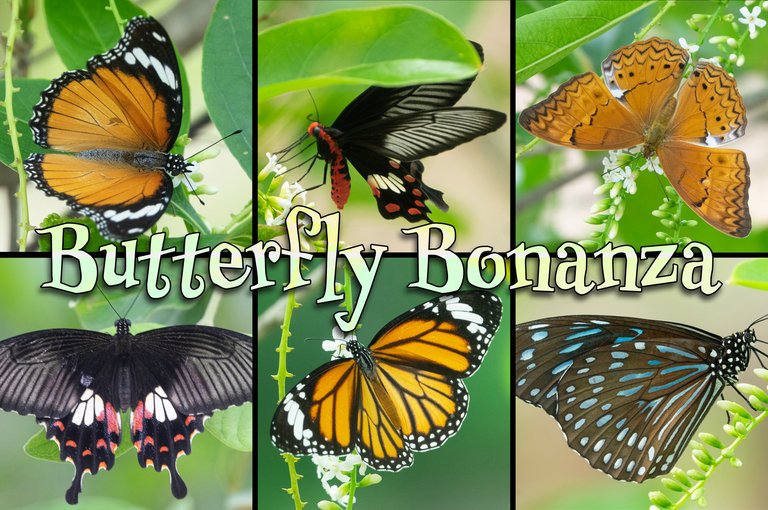

My favourite garden tree was dying. A Jamaican Cherry that had grown with vigour to provide shade as soon as the house was finished and then provided masses of fruit loved by both birds and bats. But it had now run out of energy and half its branches were leafless. Knowing it probably had a limited life-span we had planted a Spiny Fiddlewood next to it as a replacement. I finally decided it was the time to remove the Cherry before it became too unsafe for me to climb up to trim the branches. I spent a couple of days very carefully cutting it back bit by bit so as not to damage any of the nearby plants...or the house.
Spiny Fiddlewood with the Jamaican Cherry's trunk, a ladder and our house behind
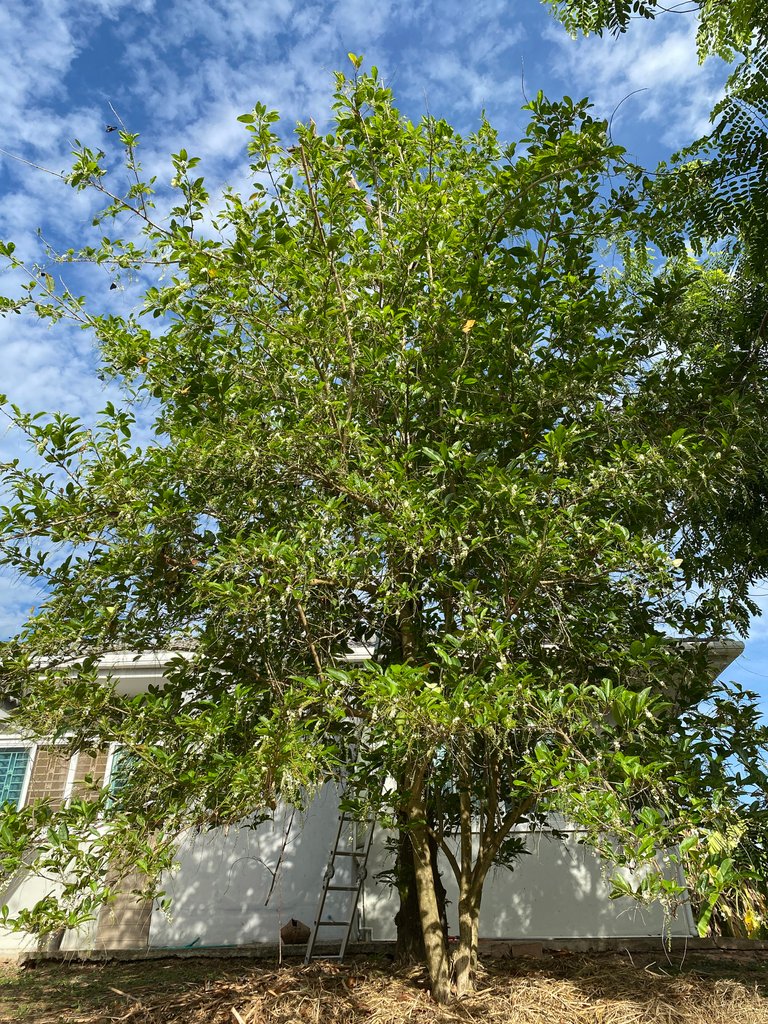
The Fiddlewood had been producing flowers for a couple of years already but as soon as it was freed from the Cherry's shade it exploded into life. Within days it was awash with hanging sprigs of small white flowers with a lovely fragrance in the air but the most noticeable change was the butterflies. Throughout the day it absolutely shimmered with their activity. It was already quite a big bush, almost a tree, and it was hard to estimate just how many butterflies there were but I would say at times there must have been around two hundred fluttering and feeding around it. And even an untrained eye could see a good variety of species.
Dark Blue Tiger (Tirumala septentrionis)
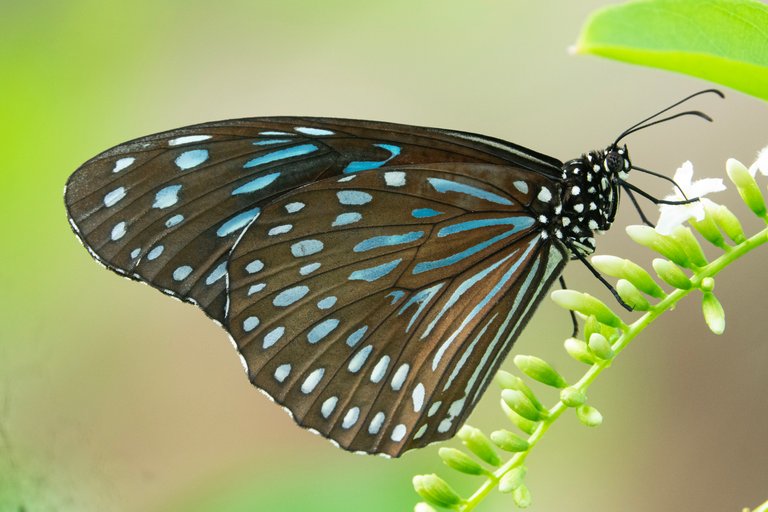
Common Crow (Euploea core)
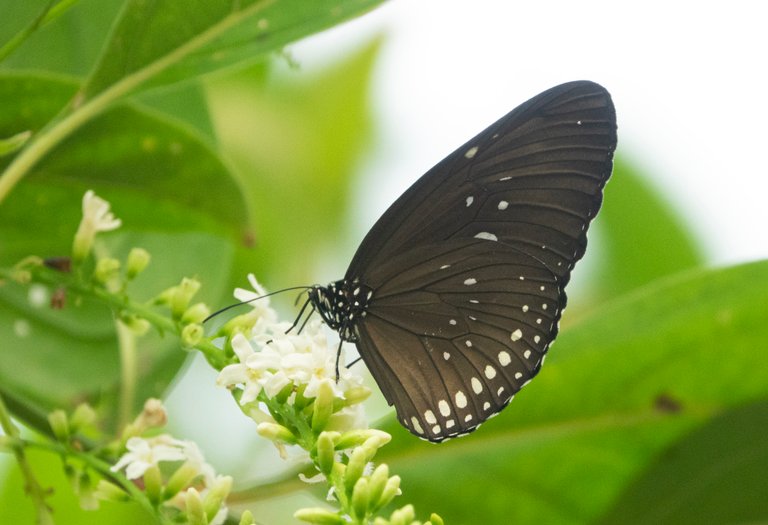
The two commonest were Dark Blue Tigers with their intricate stripes and spots of pale blue on a dark background, and the Common Crow, dark brown with a few white spots and a lovely sheen of dark blue when it flies. These are both big insects and there were always dozens of each quenching their thirst for nectar.
Lemon Emigrant (Catopsilia pomona)
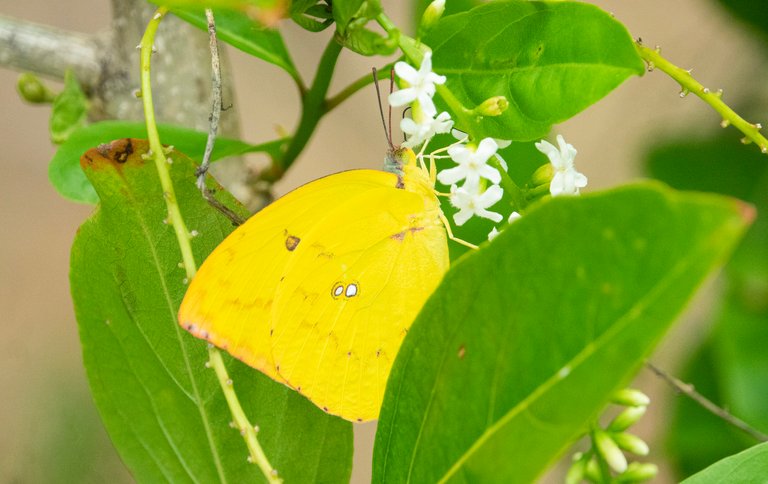
At times the Lemon Emigrant matched them for numbers. This is a migratory species which seemed to be passing through the area and frequently fooled me by being quite variable in size and markings but is generally a pleasant pale yellow colour.
Common Rose (Pachliopta aristolochiae)
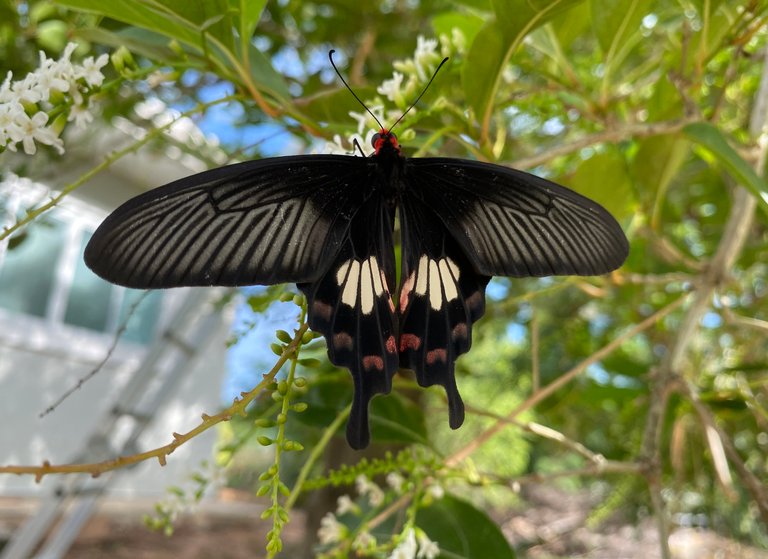
Common Jay (Graphium doson)

Spot Swordtail (Graphium nomius)
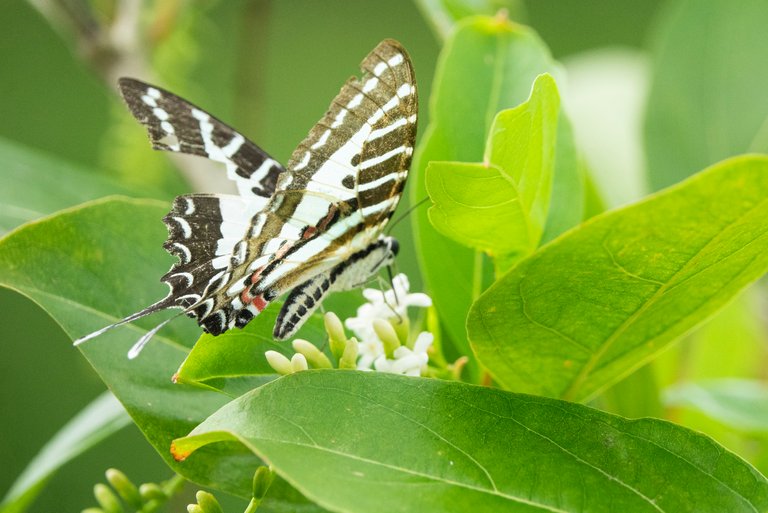
Less common but more striking were the Common Rose with its dramatic black, red and white patterning; the Common Jay with its perpetual fluttering and lovely dots and stripes, plus the similar Spot Swordtail with its elegant extensions to the hindwings.
Autumn Leaf (Doleschallia bisaltide)

Common Albatross (Appias paulina)
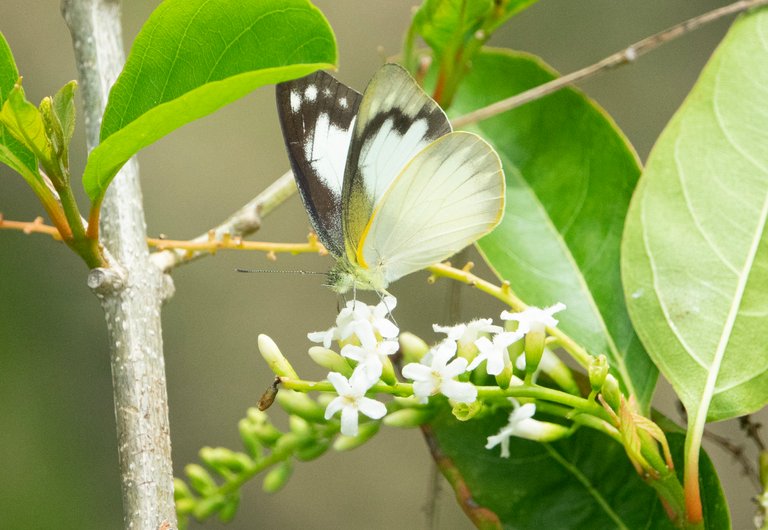
Common Leopard (Phalanta phalantha)
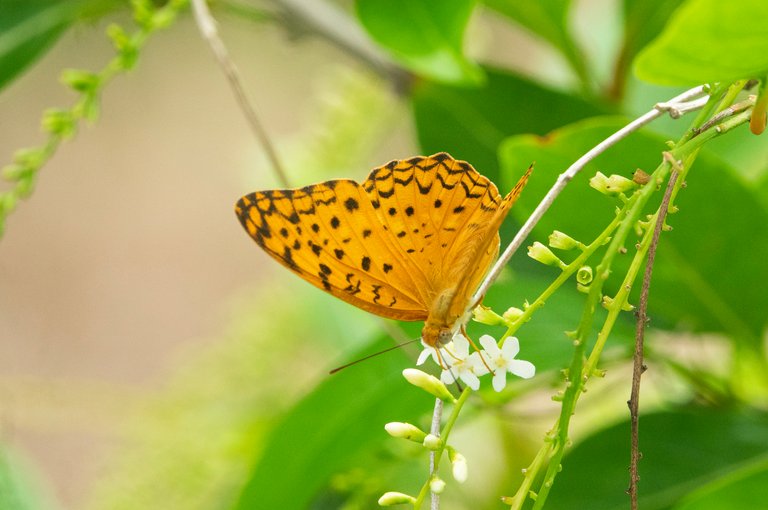
Brown Awl (Badamia exclamationis)
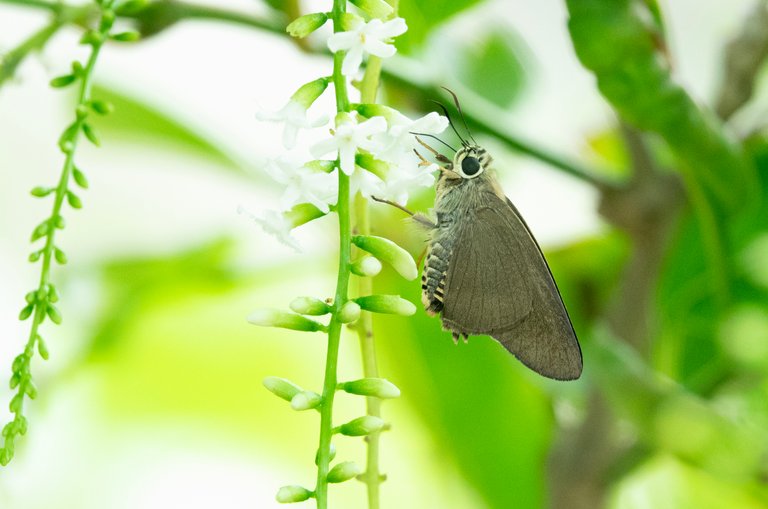
Common Banded Awl (Hasora chromus)
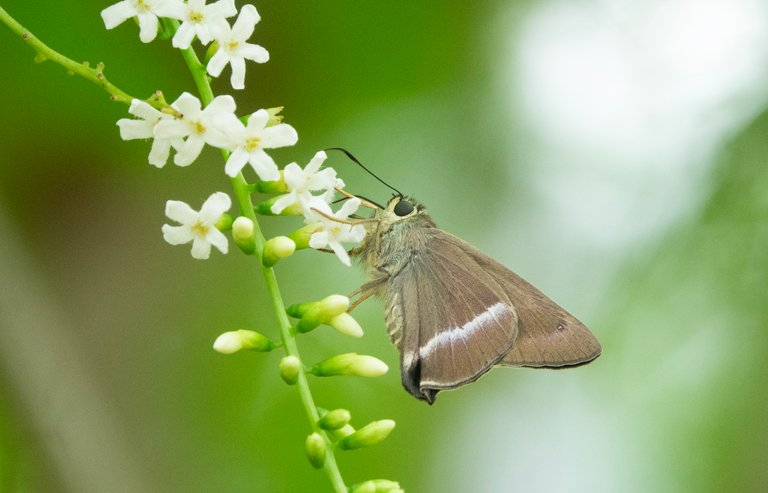
At this stage the main trunk and branches of the Cherry were still standing and every morning I climbed up to level with our roof and spend at least half an hour sharing the sunshine with this dazzling display of butterflies. It was hard to know which way to look and a butterfly would often settle on a flower too close for my camera to focus on it! And spending time watching like this helped me notice all the others. Less common and often a lot smaller, every time I looked with any care I found something new. I have so far identified 23 different species of butterfly on this one plant and the flowering looks like it will continue for some time.
Asian Honey Bee (Apis cerana) and Giant Honey Bee (Apis dorsata)

Variety of day-flying moths
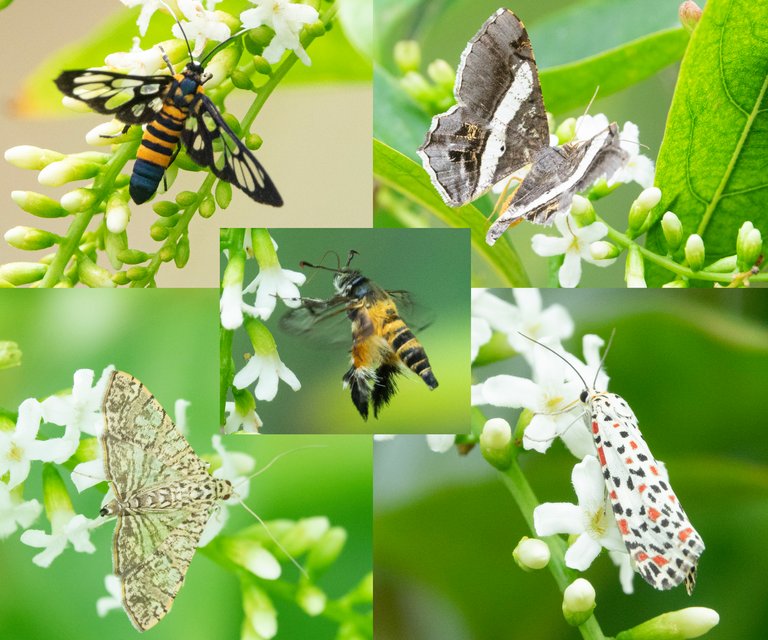
Pellucid Hawkmoth (Cephonodes hylas)
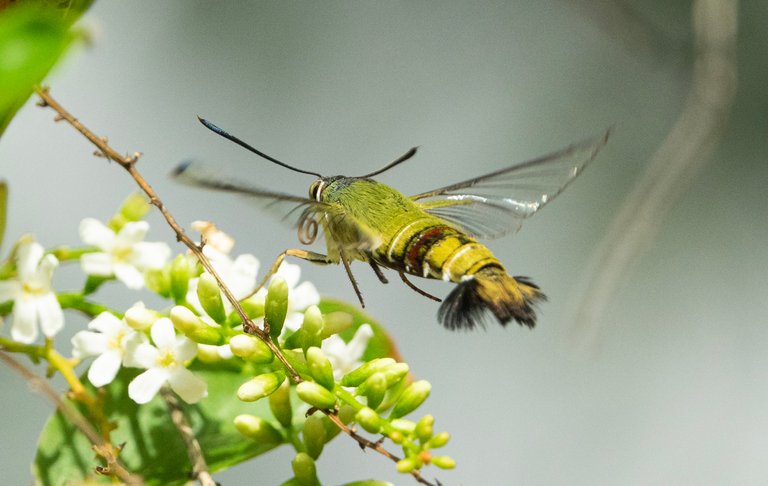
Wasp (Megacolia azurea)
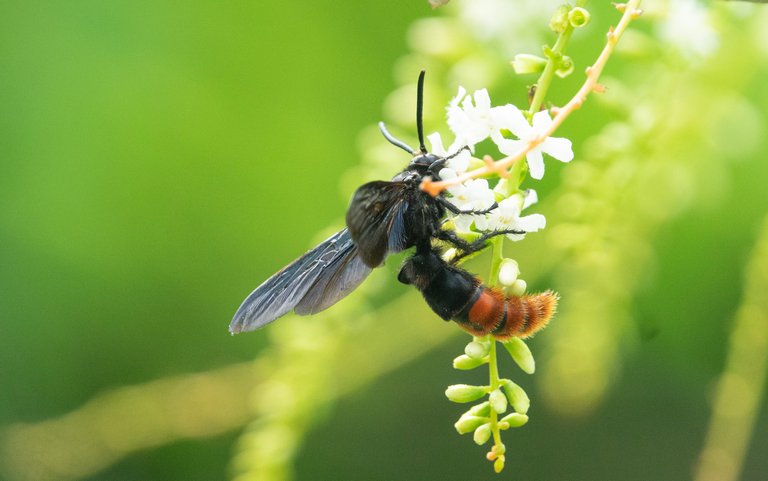
But, of course, it wasn't only butterflies. There were also two Honey Bee species and several day-flying moths, including the striking Pellucid Hawkmoth that looks like a little flying lobster, plus wasps and more. I had a look at night and the bush had been taken over by other moths that I didn't even start trying to identify. I was beginning to feel a bit overwhelmed so just enjoyed the spectacle going on just outside our bedroom window.
Marbled Map (Cyrestis cocles) at night
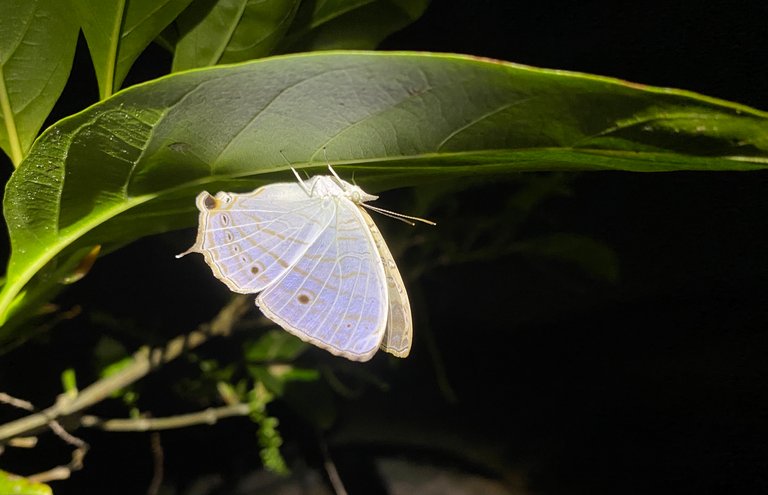
Dark Blue Tigers and Common Crow sleeping together at night
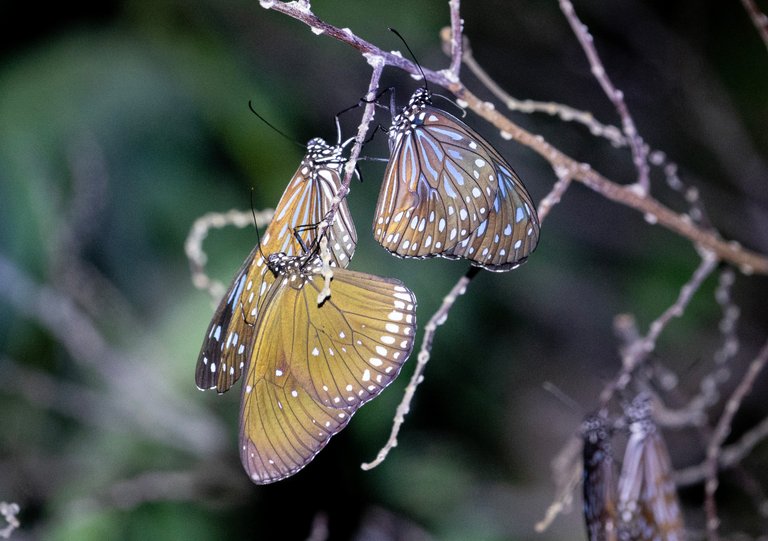
Chequered Snout Moth (Pygospila tyres)
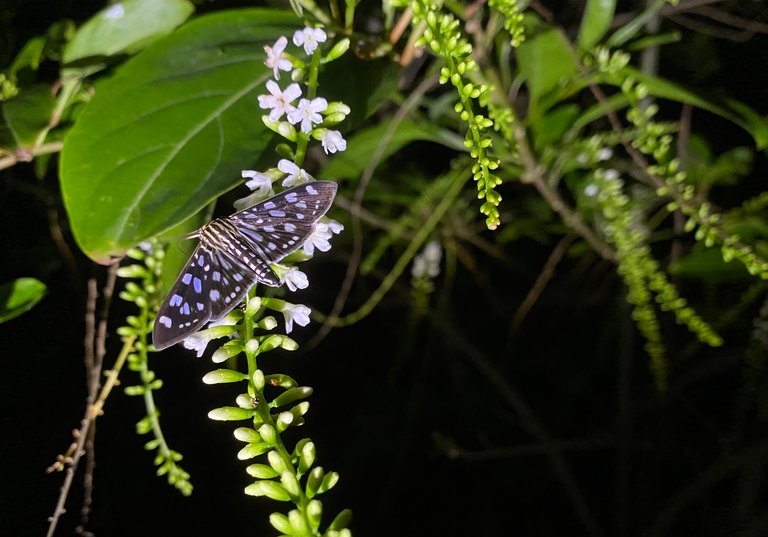
At night I also found many butterflies resting in nearby trees. They were all doing good impressions of leaves and would have been hard to notice except for the artificial light of my torch picking them out so easily.
Common Mormon (Papilio polytes)
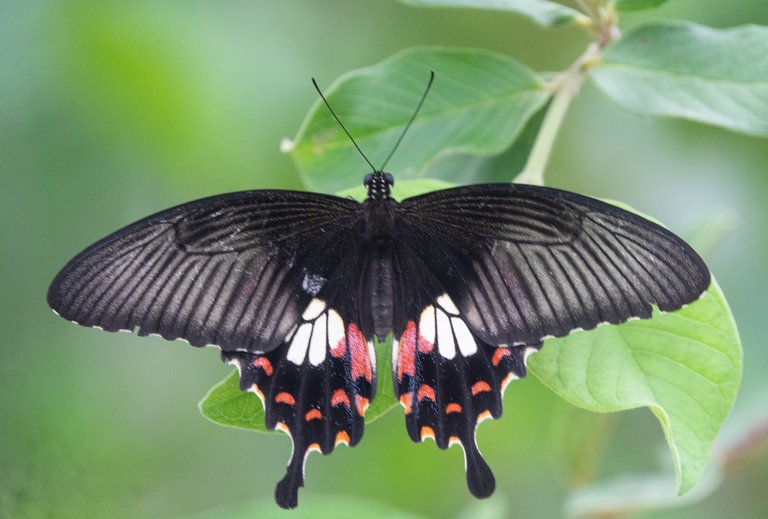
Common Tiger (Danaus genutia)

Lemon Pansy (Junonia lemonias)
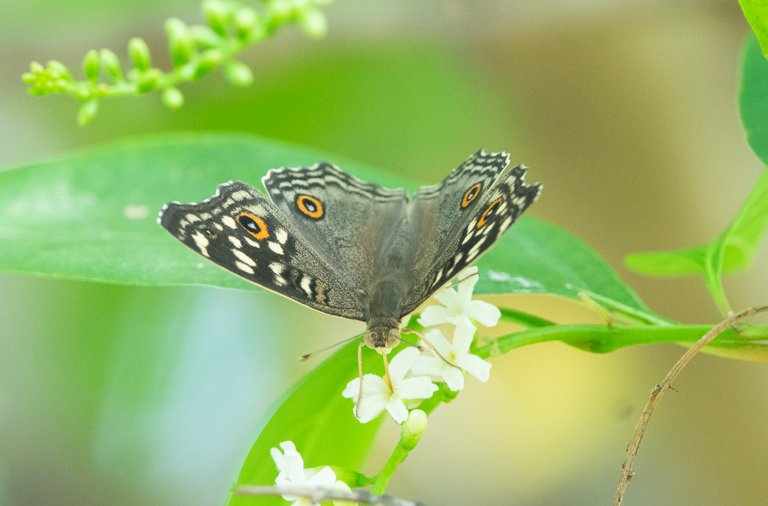
Common Grass Yellow (Eurema hecabe)
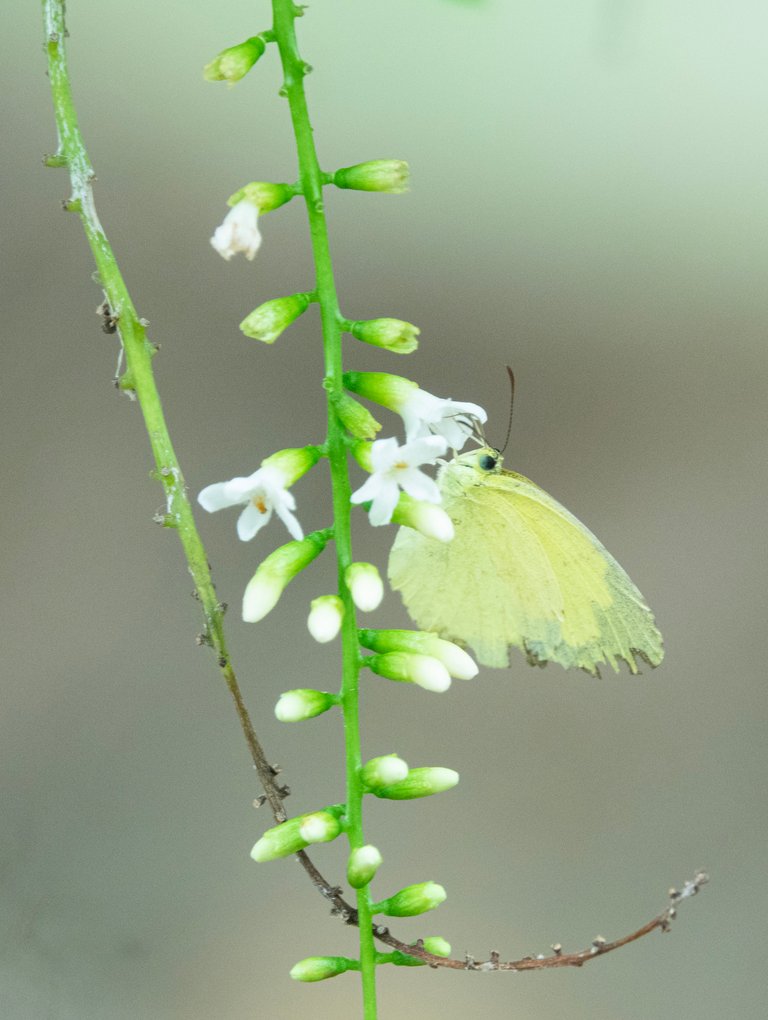
Such tiny quantities of nectar but so many flowers. I wonder just how much nectar so many insects can get through in a day. A litre perhaps?
Glassy Tiger (Parantica aglea)
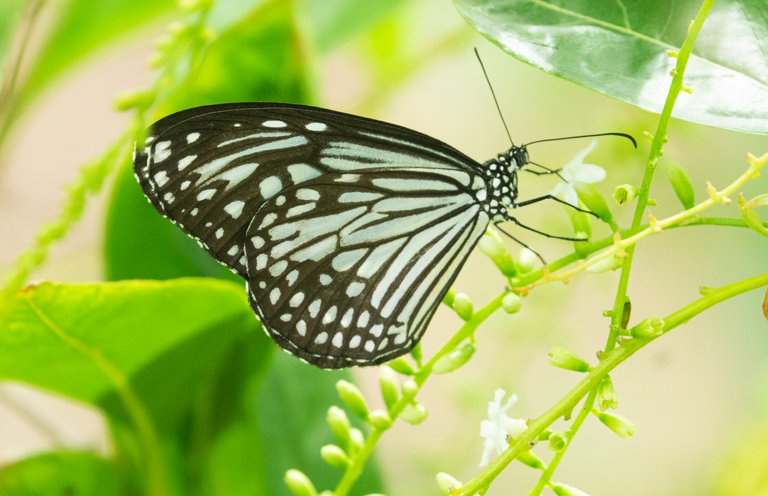
Common Yeoman (Cirrochroa tyche)

Great Eggfly (Hypolimnas bolina)

I am definitely sorry to see the end of my friendly old Jamaican Cherry that gave me and our wildlife so much but I could not be happier with its replacement!
Palm Bob (Suastus gremius)

Plain Tiger (Danaus chrysippus)
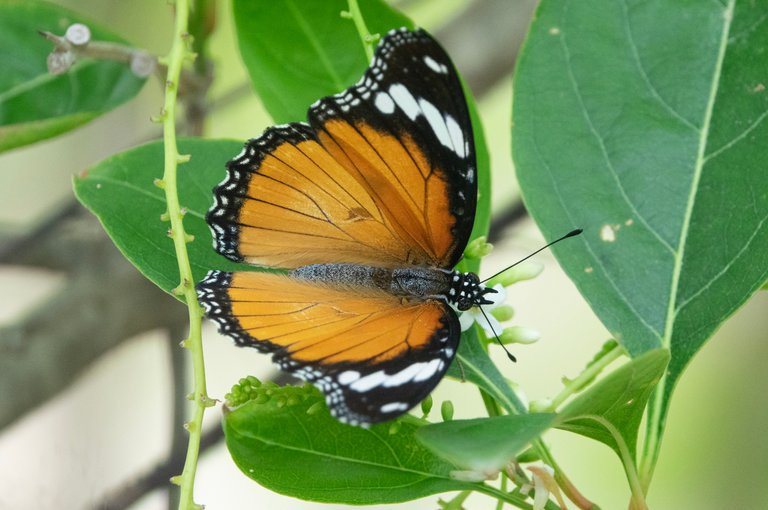
Rustic (Cupha erymanthis)
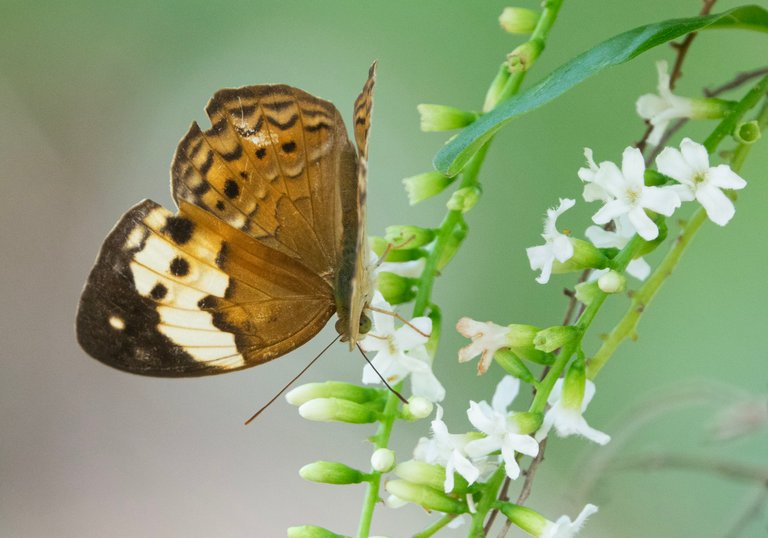
I saved the smallest butterfly until last. This one is almost beyond "tiny"!
Tiny Grass Blue (Zizula hylax)
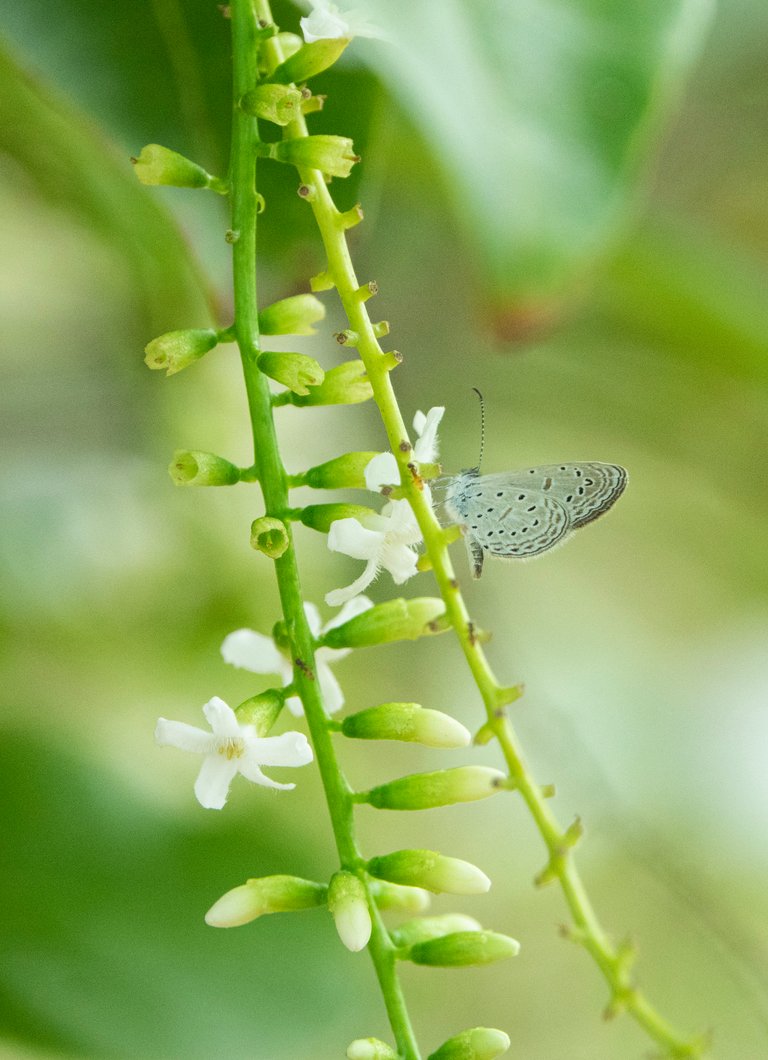


Wow. It looks like you have a butterfly sanctuary. 😊
Yes, and I really hope they hang around forever
Nah.. they will die at the right time.😇 But a new one will come.😊
Such a beautiful shots 👌🏻📸
Many thanks!
$PIZZA slices delivered:
@visualshots(1/5) tipped @hadrianwild
👏 Keep Up the good work on Hive ♦️ 👏
❤️ @dimascastillo90 suggested sagarkothari88 to upvote your post ❤️
🙏 Don't forget to Support Back 🙏
I am sure that was more than amazing to see and be so close too. They are all so beautiful.
Thank you. It was amazing and so unexpected! And as I type it's still going on!